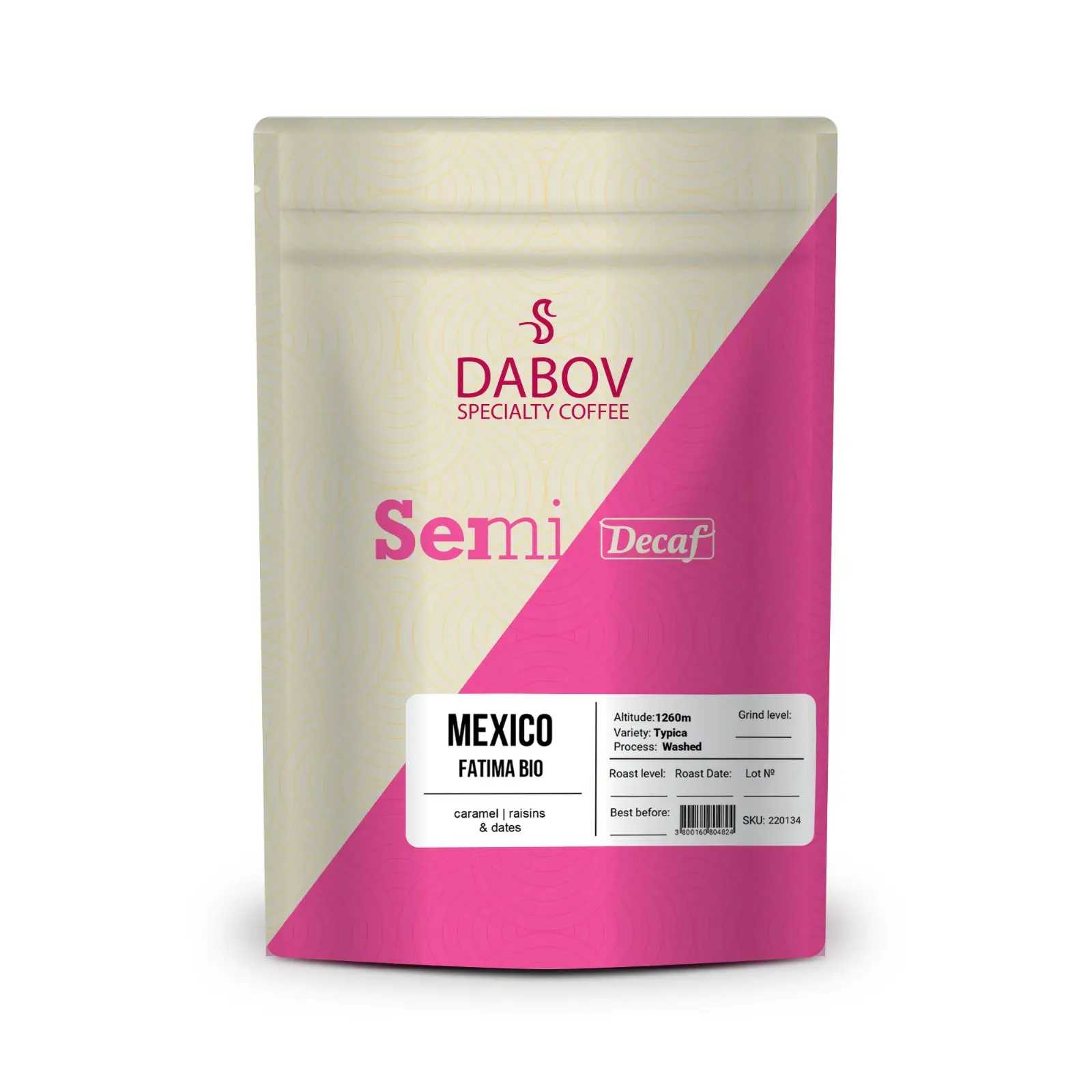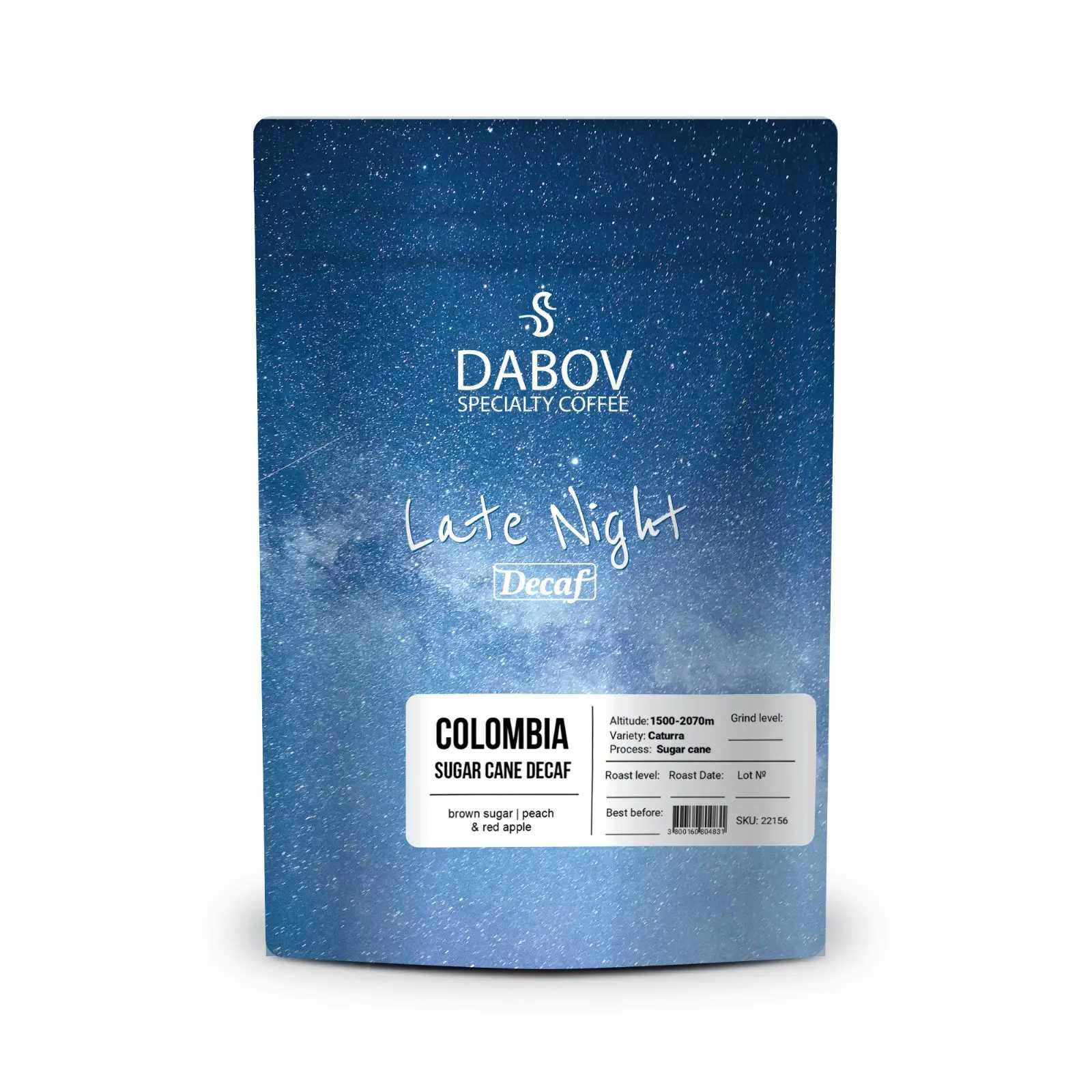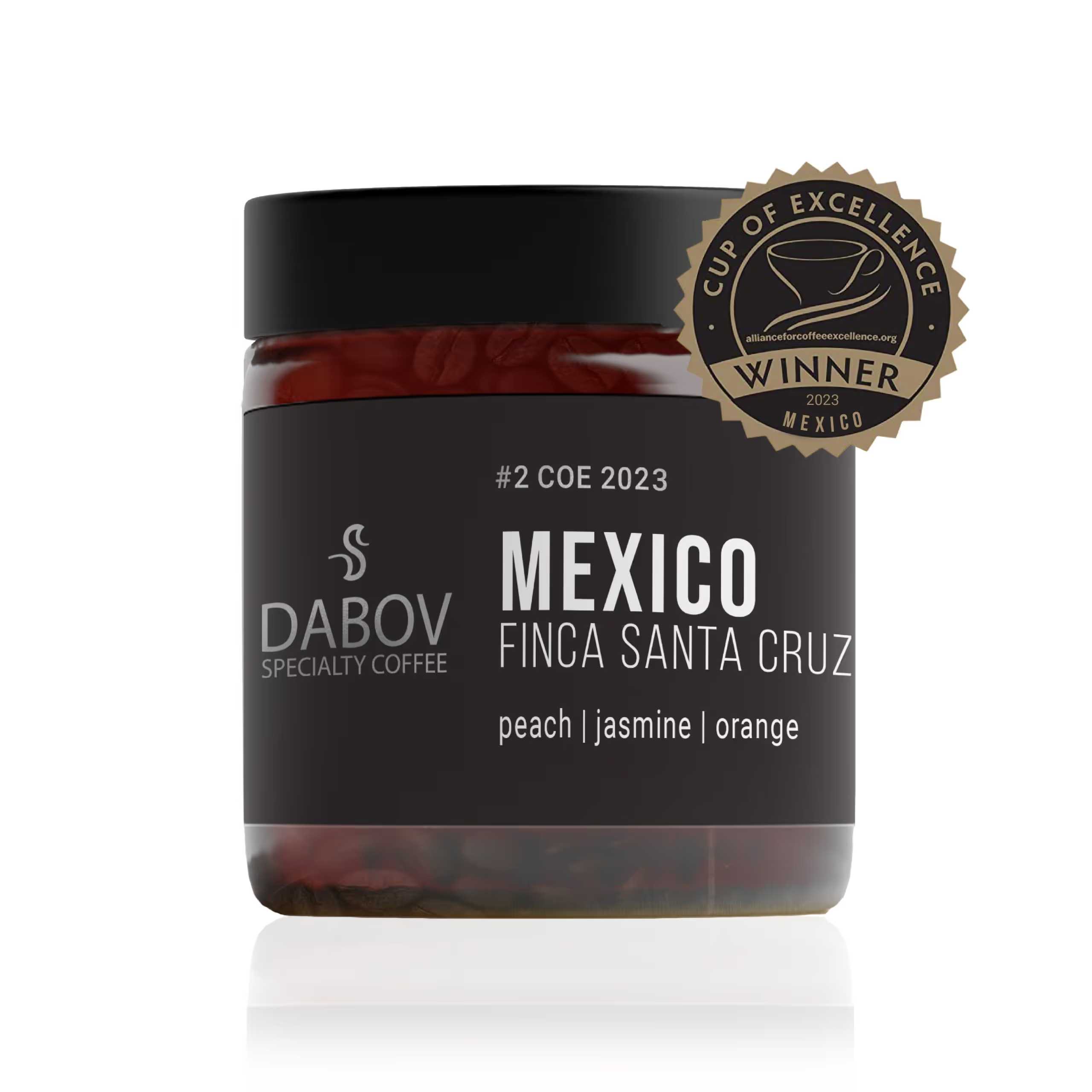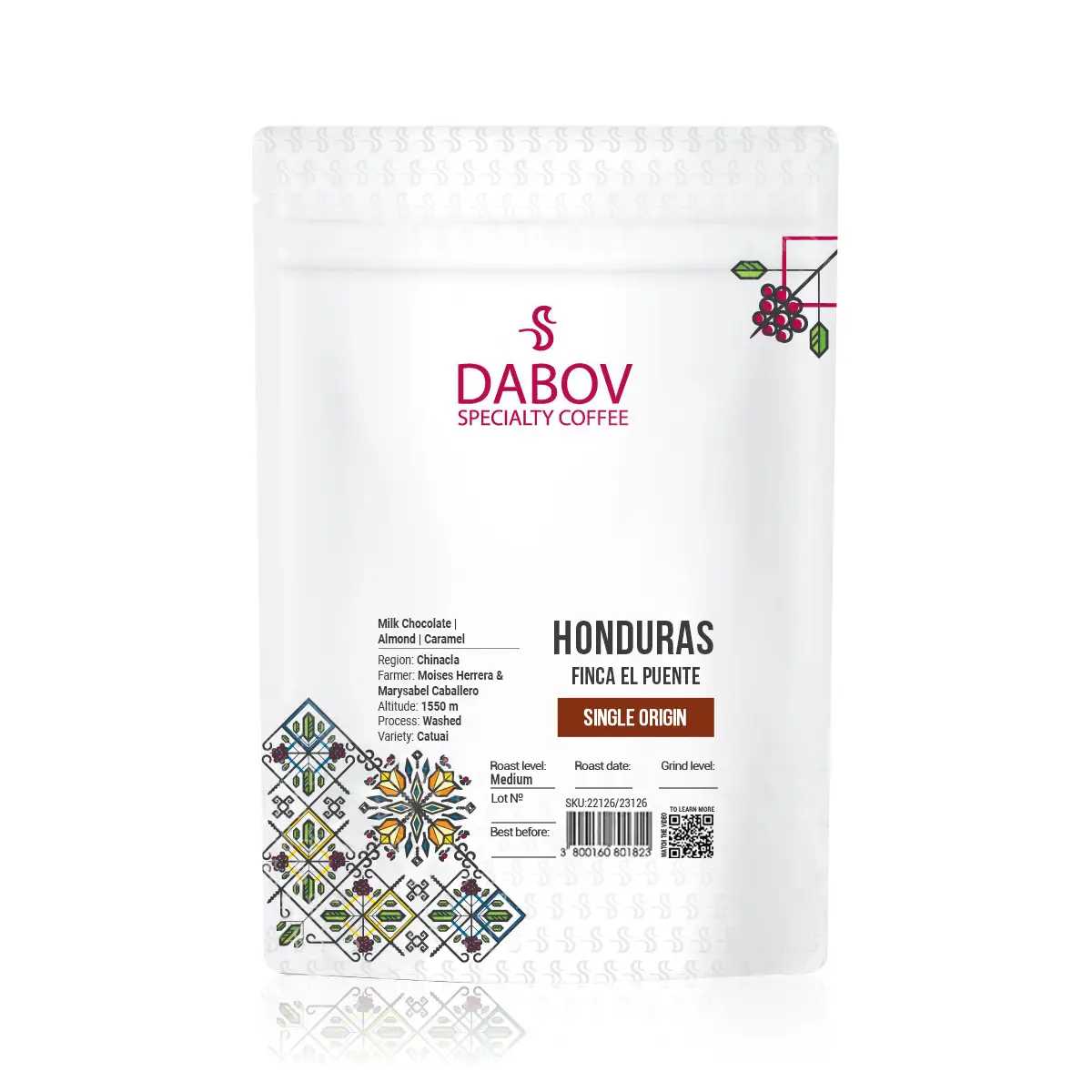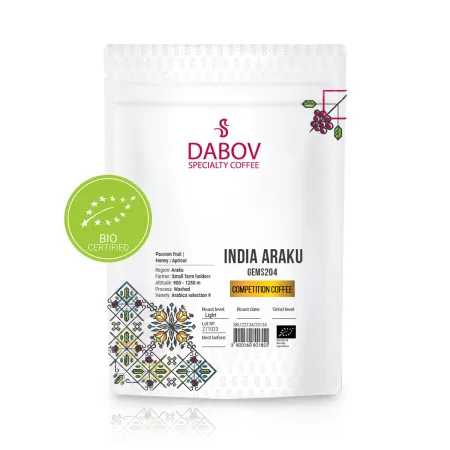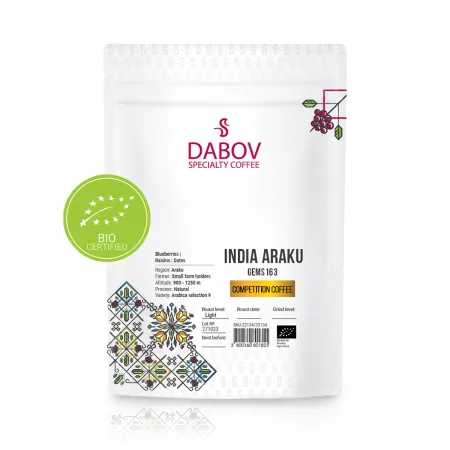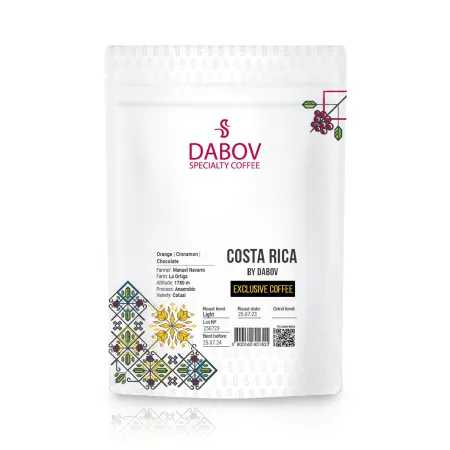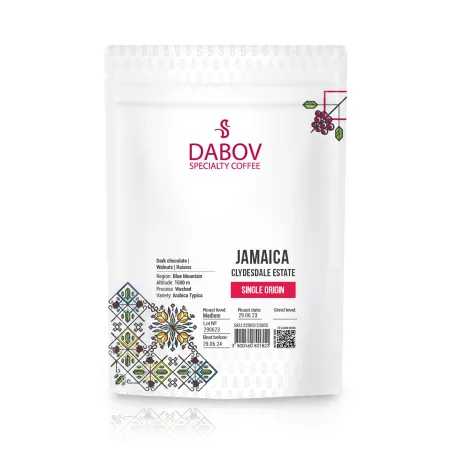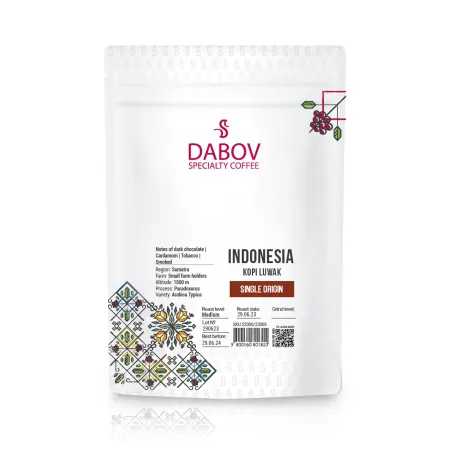Innovative Processing Methods for Coffee Cherries
Discover the transformative world of coffee cherry processing and its profound effect on flavor and quality. As the coffee industry evolves, innovative methods are reshaping traditional practices, enhancing sustainability and meeting the modern consumer's expectations. From anaerobic fermentation to carbonic maceration, these groundbreaking techniques are not just about taste; they also promise a greener future. This guide will walk you through essential steps and modern technologies, showcasing success stories of pioneers in the field. Join us on this journey of flavor enhancement and sustainability as we explore the exciting future of coffee processing.
Coffee cherry processing is a crucial step in the journey from farm to cup, playing a pivotal role in shaping the flavor, quality, and market value of coffee. As the coffee industry continues to evolve, innovative processing methods are emerging, revolutionizing the way we approach coffee production and consumption. These cutting-edge techniques not only enhance the sensory experience of coffee but also address critical issues of sustainability and meet the ever-growing demands of discerning consumers.
Introduction
The world of coffee is undergoing a remarkable transformation, driven by a wave of innovation in processing methods. Traditional techniques that have been used for centuries are now being complemented and, in some cases, replaced by modern approaches that push the boundaries of what's possible in coffee production. This shift is not merely about novelty; it's a response to changing consumer preferences, environmental concerns, and the pursuit of excellence in coffee quality.
The importance of innovation in coffee processing cannot be overstated. As climate change threatens coffee-growing regions and consumers become more conscious of sustainability, the industry is compelled to adapt. Innovative processing methods offer solutions to these challenges while simultaneously opening up new avenues for flavor development and quality improvement. By embracing these new techniques, coffee producers can differentiate their products in a competitive market, command premium prices, and contribute to the long-term sustainability of the coffee sector.
Section 1: Understanding Coffee Cherry Processing
1.1 What is Coffee Cherry Processing?
Coffee cherry processing is the crucial stage that bridges the gap between harvesting ripe coffee cherries and producing the green coffee beans that are ready for roasting. This process involves removing the various layers surrounding the coffee seed, including the pulp, mucilage, parchment, and silverskin. The method chosen for this transformation significantly influences the final flavor profile of the coffee.
The importance of coffee cherry processing lies in its ability to unlock the potential flavors locked within the bean. Different processing methods can enhance or subdue various flavor notes, acidity levels, and body characteristics. For instance, a well-executed natural process can bring out vibrant fruit notes and a syrupy body, while a washed process might highlight the coffee's inherent acidity and clarity. Understanding and mastering these processes allows producers to craft coffees that cater to diverse palates and market demands.
Moreover, coffee cherry processing is not just about flavor manipulation; it's also a critical point for quality control. Proper processing ensures that defects are minimized, reducing the risk of off-flavors or spoilage. It's during this stage that producers can address issues such as over-fermentation, mold growth, or uneven drying, all of which can significantly impact the coffee's final quality and value.
1.2 Traditional vs. Modern Processing Techniques
The coffee industry has long relied on traditional processing methods, primarily washed, natural, and honey processes. These time-honored techniques have shaped the coffee landscape for generations, each imparting distinct characteristics to the final product. The washed process, known for producing clean and bright coffees, involves removing the cherry's outer layers before fermentation and drying. Natural processing, on the other hand, allows the entire cherry to dry around the bean, resulting in fruity and full-bodied coffees. The honey process, a middle ground between washed and natural, removes varying amounts of mucilage before drying, offering a spectrum of flavor possibilities.
While these traditional methods continue to produce excellent coffees, modern techniques are pushing the boundaries of what's possible in coffee processing. Innovations in fermentation, such as anaerobic and carbonic maceration, are allowing producers to create unique flavor profiles that were previously unattainable. These methods often involve controlled environments, precise temperature regulation, and sometimes the introduction of specific yeasts or bacteria to guide the fermentation process.
Modern processing techniques also focus on sustainability and efficiency. Zero-waste processing methods, for instance, aim to utilize every part of the coffee cherry, reducing environmental impact and creating additional revenue streams for farmers. Advanced drying technologies, such as mechanical dryers with precise humidity and temperature controls, are helping producers achieve more consistent results and mitigate the risks associated with unpredictable weather patterns.
The evolution from traditional to modern processing techniques represents a shift in mindset within the coffee industry. While traditional methods relied heavily on intuition and generational knowledge, modern approaches incorporate scientific understanding, data analysis, and technological advancements. This blend of art and science is enabling producers to have greater control over the final product, experiment with new flavor profiles, and adapt to changing environmental conditions.
Section 2: Innovative Coffee Methods
2.1 Overview of Innovative Coffee Methods
The landscape of coffee processing is undergoing a revolutionary transformation, with innovative methods emerging that challenge conventional wisdom and expand the possibilities of flavor development. These cutting-edge techniques are not merely variations on traditional processes but represent entirely new approaches to handling coffee cherries. They leverage scientific understanding of fermentation, cellular biology, and chemical reactions to create unique flavor profiles and enhance quality control.
One of the most exciting developments in innovative coffee processing is the exploration of controlled fermentation environments. By manipulating variables such as oxygen levels, temperature, pH, and microbial populations, producers can guide the fermentation process with unprecedented precision. This level of control allows for the creation of coffee with specific flavor notes, from intense tropical fruit characteristics to complex wine-like acidity.
Another area of innovation focuses on the concept of terroir in coffee, similar to that in wine production. Advanced processing methods are being developed to highlight and enhance the unique flavor characteristics imparted by a coffee's growing environment. These techniques often involve careful manipulation of the coffee cherry's natural sugars and acids during processing to accentuate desirable flavor compounds.
Sustainability is also a driving force behind many innovative processing methods. As the coffee industry grapples with environmental challenges and resource scarcity, new techniques are emerging that aim to reduce water usage, minimize waste, and create value-added products from coffee cherry by-products. These methods not only address ecological concerns but also offer potential economic benefits to coffee-producing communities.
2.2 Key Innovative Techniques
2.2.1 Anaerobic Fermentation
Anaerobic fermentation is a groundbreaking technique that has gained significant attention in the specialty coffee world. This method involves fermenting coffee cherries or depulped coffee beans in an oxygen-free environment, typically using sealed tanks or containers. By eliminating oxygen from the fermentation process, producers can create unique flavor profiles that are often described as intense, complex, and sometimes even "funky."
The anaerobic environment encourages the growth of specific microorganisms that produce distinct metabolic by-products, influencing the coffee's final flavor. This process can lead to the development of fruity, winey, or even cheese-like notes that are rarely found in coffees processed using traditional methods. The duration of anaerobic fermentation can vary widely, from a few days to several weeks, with longer fermentations generally resulting in more pronounced and unusual flavor characteristics.
One of the key benefits of anaerobic fermentation is the level of control it offers producers. By carefully managing factors such as temperature, pH levels, and fermentation time, they can fine-tune the flavor development process. This precision allows for greater consistency and repeatability, which is particularly valuable in the specialty coffee market where unique and reliable flavor profiles command premium prices.
However, anaerobic fermentation requires a high degree of skill and attention to detail. Overfermentation can easily lead to off-flavors or defects, making quality control crucial. Producers experimenting with this method often invest in specialized equipment, such as stainless steel tanks with pressure release valves, to ensure optimal conditions for fermentation.
The impact of anaerobic fermentation on the coffee's flavor profile can be profound. Coffees processed this way often exhibit heightened sweetness, intense fruitiness, and a syrupy body. Notes of tropical fruits, berries, and even floral or spice characteristics are common. The acidity in these coffees can range from bright and vibrant to more mellow and wine-like, depending on the specific parameters of the fermentation process.
2.2.2 Carbonic Maceration
Carbonic maceration is an innovative processing technique borrowed from the wine industry that has found a new application in coffee production. This method involves placing whole, intact coffee cherries in a sealed tank filled with carbon dioxide. The anaerobic environment created by the CO2 initiates an intracellular fermentation process within the cherries, leading to unique flavor development.
In carbonic maceration, the coffee cherries at the bottom of the tank are gently crushed by the weight of those above, releasing some juice. This juice begins to ferment, producing alcohol and additional CO2, which further enhances the anaerobic environment. Meanwhile, the intact cherries undergo a different kind of fermentation, with enzymes breaking down cellular structures from within. This process can last anywhere from a few days to several weeks, depending on the desired flavor outcome.
The result of carbonic maceration is coffee with a distinctly fruity and often wine-like character. Flavor notes commonly associated with this process include berries, tropical fruits, and sometimes even hints of milk chocolate or caramel. The acidity in carbonic macerated coffees tends to be softer and more integrated, contributing to a smooth and often creamy mouthfeel.
One of the unique aspects of carbonic maceration is its ability to produce complex flavors while maintaining a clean cup profile. Unlike some other experimental processing methods that can result in overpowering or polarizing flavors, carbonic maceration often yields coffees that are both interesting and approachable. This balance makes it an attractive option for specialty roasters looking to offer unique products that still appeal to a broad range of consumers.
Implementing carbonic maceration requires specialized equipment and a high level of expertise. Producers must carefully monitor and control the environment within the fermentation tanks, managing factors such as temperature, pressure, and duration. The investment in equipment and training can be significant, but the potential for creating high-value, distinctive coffees makes it an appealing option for many forward-thinking producers.
2.2.3 Zero-Waste Processing
Zero-waste processing represents a paradigm shift in coffee production, focusing on sustainability and resource efficiency. This innovative approach aims to utilize every part of the coffee cherry, minimizing environmental impact while creating additional value streams for producers. As the coffee industry faces increasing pressure to address its ecological footprint, zero-waste processing is gaining traction as a solution that aligns environmental responsibility with economic opportunity.
The concept of zero-waste processing extends beyond simply reducing waste; it involves reimagining the entire coffee production process. Traditional coffee processing often discards a significant portion of the coffee cherry, including the pulp, mucilage, and parchment. These by-products can contribute to water pollution and greenhouse gas emissions if not properly managed. Zero-waste processing seeks to transform these potential waste products into valuable resources.
One key aspect of zero-waste processing is the utilization of coffee cherry pulp. This nutrient-rich material can be composted and used as organic fertilizer, reducing the need for synthetic inputs and improving soil health. Some innovative producers are taking this a step further by using coffee pulp as a substrate for growing mushrooms, creating an additional food product and income source.
Another area of focus is the use of coffee mucilage, the sticky layer surrounding the coffee bean. In traditional wet processing, this mucilage is often washed away, consuming large amounts of water and potentially contributing to water pollution. Zero-waste approaches include methods for recovering and utilizing this mucilage. For example, some producers are experimenting with fermenting the mucilage to produce ethanol, which can be used as a biofuel or in the production of beverages.
The parchment layer, typically removed during the milling process, is also finding new applications in zero-waste systems. This cellulose-rich material can be used as a renewable fuel source for drying coffee or other agricultural products. Some innovative companies are even exploring the use of coffee parchment in the production of biodegradable packaging materials.
Water conservation is another critical component of zero-waste processing. Many producers are implementing water recycling systems that treat and reuse water from the wet milling process. This not only reduces water consumption but also minimizes the environmental impact of wastewater discharge.
Several coffee farms and cooperatives around the world are successfully implementing zero-waste processing methods. For example, the Alsacia Estate in Costa Rica has developed a comprehensive zero-waste system that includes composting, biogas production, and water recycling. Their approach has not only reduced their environmental impact but has also led to cost savings and the creation of new revenue streams.
Section 3: Coffee Processing Guide
3.1 Essential Steps in Coffee Cherry Processing
Coffee cherry processing is a meticulous journey that transforms the raw fruit into the green coffee beans ready for roasting. Understanding each step of this process is crucial for producers aiming to create high-quality coffee with distinct flavor profiles. Here's a comprehensive guide to the essential steps involved in coffee cherry processing:
- Harvesting: The process begins with the careful selection and picking of ripe coffee cherries. Ideally, cherries should be harvested at peak ripeness, which is crucial for optimal flavor development. Many specialty coffee producers opt for selective hand-picking to ensure only the ripest cherries are processed.
- Sorting: After harvesting, the cherries are sorted to remove any unripe, overripe, or defective fruits. This step is critical for maintaining quality and can be done manually or with the help of flotation tanks and mechanical sorters.
- Pulping (for washed and honey processes): If following a washed or honey process, the next step is pulping. This involves removing the outer skin and some or all of the mucilage layer surrounding the coffee beans. The amount of mucilage left on the bean varies depending on the specific process being used.
- Fermentation: Fermentation is a crucial step in many processing methods. In washed processing, it helps break down any remaining mucilage. The duration and conditions of fermentation significantly impact the coffee's final flavor profile. Innovative methods like anaerobic fermentation or carbonic maceration involve carefully controlled fermentation environments.
- Washing (for washed process): After fermentation, the coffee beans are thoroughly washed to remove any remaining mucilage and fermentation by-products. This step is skipped in natural and some honey processes.
- Drying: Regardless of the processing method, all coffee must be dried to the appropriate moisture content (typically around 10-12%) for storage and transport. Drying can be done on raised beds, patios, or using mechanical dryers. The drying process is critical and must be carefully managed to avoid defects and ensure even moisture distribution.
- Resting: After drying, the coffee is often left to rest for a period. This allows moisture content to stabilize and can contribute to flavor development.
- Hulling: Once resting is complete, the parchment layer (a thin, papery layer surrounding the bean) is removed through a process called hulling. This reveals the green coffee bean inside.
- Grading and Sorting: The final step involves grading and sorting the green coffee beans based on size, density, and quality. This ensures consistency and allows for the removal of any remaining defects.
Each of these steps presents opportunities for innovation and quality improvement. For example, some producers are experimenting with extended fermentation times or introducing specific bacteria strains during fermentation to develop unique flavor profiles. Others are implementing advanced drying technologies that offer precise control over temperature and humidity, ensuring more consistent results.
3.2 Choosing the Right Method for Different Coffee Types
Selecting the appropriate processing method is a critical decision that can significantly impact the final flavor profile and quality of coffee. The choice depends on various factors, including the coffee variety, local climate conditions, available resources, and desired flavor outcomes. Here's a guide to help producers choose the right method for different coffee types:
Arabica vs. Robusta:Arabica coffees, known for their complex flavors and higher acidity, often benefit from methods that highlight these characteristics. Washed processing is commonly used for high-quality Arabica beans, as it tends to produce clean, bright flavors that showcase the coffee's inherent qualities. However, natural or honey processes can also yield excellent results with Arabica, particularly for varieties with naturally fruity or floral notes.
Robusta coffees, which have a stronger, more bitter flavor profile, are often processed using the natural method. This can help to soften some of the harsher notes and add body to the coffee. However, innovative processing methods are increasingly being applied to Robusta as well, with some producers experimenting with washed processing or even anaerobic fermentation to create more complex flavor profiles.
Climate Considerations:In regions with high humidity or frequent rainfall, washed processing may be preferable as it allows for more control over the drying process and reduces the risk of mold or fermentation defects. Natural processing, which requires extended drying times, is better suited to areas with consistent, dry weather conditions.
For producers in areas with limited water resources, natural or honey processing methods can be advantageous as they require less water than the washed process. Alternatively, producers might consider investing in water recycling systems to make washed processing more sustainable in water-scarce regions.
Flavor Goals:If the goal is to produce a coffee with clean, bright acidity and clear flavor notes, washed processing is often the method of choice. This process tends to highlight the inherent characteristics of the coffee variety and its terroir.
For those aiming to create coffees with more body, sweetness, and fruity notes, natural processing can be an excellent option. This method allows the sugars from the cherry to infuse into the bean during drying, resulting in a more complex, full-bodied cup.
Honey processing offers a middle ground, allowing producers to create coffees with some of the fruity sweetness of naturals but with more clarity and acidity. By adjusting the amount of mucilage left on the bean, producers can fine-tune the balance between fruitiness and acidity.
Experimental Methods:For producers looking to create truly unique coffees, experimental methods like anaerobic fermentation or carbonic maceration can yield fascinating results. These methods are particularly well-suited to high-quality, distinctive coffee varieties that can benefit from the intense flavor development these processes offer.
However, it's important to note that these experimental methods require a high level of expertise and often specialized equipment. They're best attempted by producers who have a strong understanding of coffee processing and are willing to invest in the necessary infrastructure and training.
Market Demands:The choice of processing method should also consider market demands. While there's growing interest in experimental coffees among specialty buyers, the majority of the market still prefers more traditional flavor profiles. Producers should balance innovation with the need to create coffees that will find a ready market.
Ultimately, the key to choosing the right processing method is experimentation and careful analysis of results. Many successful producers maintain flexibility in their approach, adjusting their methods based on the specific characteristics of each harvest and the evolving demands of the market. By understanding the impact of different processing methods and carefully considering the unique factors of their situation, producers can select the approach that will best showcase the potential of their coffee.
Section 4: Modern Coffee Techniques
4.1 Technology Integration in Coffee Processing
The integration of technology in coffee processing represents a significant leap forward in the industry's ability to produce high-quality, consistent coffee while improving efficiency and sustainability. From harvesting to quality control, technological innovations are reshaping every stage of coffee production. Here's an in-depth look at how technology is being integrated into modern coffee processing:
Precision Agriculture:At the cultivation stage, precision agriculture technologies are helping farmers optimize growing conditions. Drones equipped with multispectral cameras can assess plant health, detect pest infestations, and identify areas that need attention. Soil sensors provide real-time data on moisture levels and nutrient content, allowing for more precise irrigation and fertilization. These technologies not only improve coffee quality but also contribute to more sustainable farming practices by reducing water and chemical use.
Automated Harvesting:While hand-picking remains the gold standard for specialty coffee, some larger operations are experimenting with automated harvesting machines. These machines use vibration to shake ripe cherries off the trees, potentially increasing efficiency in areas where labor shortages are a concern. However, the technology is still being refined to match the selectivity of hand-picking.
Advanced Sorting Technology:After harvesting, optical sorting machines are revolutionizing the cherry selection process. These machines use cameras and near-infrared sensors to sort cherries based on color, size, and density, ensuring that only the highest quality cherries make it to processing. This technology significantly reduces the labor required for sorting while improving consistency and quality.
Controlled Fermentation Systems:In the fermentation stage, technology is enabling unprecedented control over the process. Stainless steel tanks equipped with temperature control systems, pH monitors, and gas sensors allow producers to maintain precise conditions throughout fermentation. Some advanced systems even use artificial intelligence to analyze data from these sensors and automatically adjust conditions to achieve desired flavor profiles.
For anaerobic fermentation and carbonic maceration, specialized tanks with pressure release valves and CO2 injection systems are being developed. These allow for precise control over the anaerobic environment, enabling producers to experiment with extended fermentation times and unique flavor development.
Innovative Drying Solutions:Drying is a critical stage in coffee processing, and technology is offering new solutions to improve consistency and efficiency. Mechanical dryers with precise humidity and temperature controls allow for consistent drying regardless of weather conditions. Some advanced systems use machine learning algorithms to optimize drying parameters based on the specific characteristics of each batch of coffee.
Solar drying technology is also advancing, with new designs that improve airflow and protect coffee from unexpected rain. These systems often incorporate sensors that monitor moisture levels and alert operators when coffee reaches the ideal moisture content.
Blockchain for Traceability:Blockchain technology is being implemented to improve traceability throughout the coffee supply chain. This allows for greater transparency, ensuring that information about the coffee's origin, processing method, and quality is accurately recorded and easily accessible to buyers and consumers.
Quality Control and Cupping:In the final stages of processing, technology is enhancing quality control efforts. Spectrophotometers can analyze green coffee beans for defects and inconsistencies that might be missed by visual inspection. Some companies are even developing electronic "noses" that can detect subtle aroma compounds, potentially complementing or even partially automating the cupping process.
Data Analytics and Machine Learning:Overarching all these technological advancements is the growing use of data analytics and machine learning in coffee processing. By collecting and analyzing data from every stage of production, producers can gain insights that help them refine their processes and improve quality over time. Machine learning algorithms can identify patterns and correlations that humans might miss, potentially leading to new breakthroughs in processing techniques.
The integration of technology in coffee processing is not without challenges. The cost of implementing these advanced systems can be prohibitive for smaller producers, and there's a learning curve associated with adopting new technologies. However, as these technologies become more accessible and their benefits more apparent, they are likely to play an increasingly important role in shaping the future of coffee production.
4.2 The Role of Data and Cupping in Modern Techniques
In the ever-evolving landscape of coffee processing, data analytics and cupping have emerged as powerful tools that are transforming how coffee is produced, evaluated, and improved. These two elements, one rooted in objective measurement and the other in sensory analysis, are working in tandem to drive innovation and quality in modern coffee techniques.
Data Analytics in Coffee Processing:The integration of data analytics into coffee processing represents a significant shift towards more scientific and precise production methods. Producers are now collecting data at every stage of the coffee journey, from soil conditions and weather patterns during cultivation to fermentation parameters and drying times during processing. This wealth of information, when properly analyzed, can provide invaluable insights that inform decision-making and process optimization.
One of the key applications of data analytics is in predicting and controlling quality outcomes. By analyzing historical data on processing parameters and their corresponding cup qualities, producers can develop models that predict how changes in processing will affect the final product. For example, a producer might use data analytics to determine the optimal fermentation time for a particular coffee variety to achieve a desired flavor profile.
Data analytics is also playing a crucial role in sustainability efforts. By analyzing resource usage data, producers can identify areas where water or energy consumption can be reduced without compromising quality. This not only reduces the environmental impact of coffee production but can also lead to significant cost savings.
Advanced statistical techniques and machine learning algorithms are being employed to uncover complex relationships within the data. These tools can identify subtle patterns that might not be apparent through traditional analysis, potentially leading to new insights about the factors that influence coffee quality.
The Role of Cupping in Modern Coffee Production:While data analytics provides objective measurements, cupping remains the gold standard for assessing coffee quality and flavor. This sensory evaluation technique, which involves systematically tasting coffee to evaluate its characteristics, is an essential component of modern coffee processing.
In the context of innovative processing methods, cupping plays a critical role in validating and refining new techniques. When producers experiment with methods like anaerobic fermentation or extended drying times, cupping provides the feedback necessary to understand how these changes affect the final product. This iterative process of experimentation and evaluation is key to developing new processing methods that consistently produce high-quality, distinctive coffees.
Cupping is also evolving to meet the needs of modern coffee production. Many producers and buyers are now using more detailed scoring systems that go beyond the traditional 100-point scale. These expanded systems might include separate scores for different flavor attributes or evaluations of how the coffee performs at different temperatures or brew methods.
The Synergy of Data and Cupping:The true power of modern coffee techniques lies in the integration of data analytics and cupping. By correlating cupping scores and flavor notes with processing data, producers can gain a deeper understanding of how different variables affect coffee quality.
For example, a producer might use data analytics to track fermentation temperatures, times, and pH levels across multiple batches of coffee. By then cupping each batch and analyzing the results alongside the processing data, they can identify the specific conditions that lead to the most desirable flavor profiles. This information can then be used to refine and standardize their processing methods.
Some innovative producers are even using machine learning algorithms to analyze cupping notes and scores alongside processing data. These systems can identify patterns and relationships that might not be apparent to human analysts, potentially uncovering new ways to manipulate flavor through processing techniques.
The combination of data analytics and cupping is also proving valuable in maintaining consistency across harvests. By comparing current processing data and cupping results with historical records, producers can make informed adjustments to their methods to account for variations in factors like climate or crop yield.
Challenges and Future Directions:While the integration of data analytics and cupping in modern coffee techniques offers tremendous potential, it also presents challenges. Standardizing data collection and cupping protocols across the industry remains difficult, making it challenging to compare results between different producers or regions. There's also the risk of over-relying on data at the expense of the artisanal skills and intuition that have long been central to coffee production.
Looking to the future, we can expect to see even greater integration of technology in both data collection and sensory analysis. Automated sensors and IoT devices will likely become more prevalent in coffee processing, providing even more detailed data for analysis. In the realm of cupping, there's ongoing research into using electronic "noses" and "tongues" to complement human sensory analysis, potentially offering more objective measurements of flavor compounds.
The role of data and cupping in modern coffee techniques is continually evolving, driving innovation and quality improvements across the industry. As these tools become more sophisticated and widely adopted, they have the potential to unlock new possibilities in coffee processing, leading to more diverse, high-quality, and sustainable coffee production.
Section 5: Coffee Cherry Techniques in Practice
5.1 Success Stories from Innovative Coffee Producers
The world of coffee production is rich with stories of innovative producers who have embraced new processing techniques to create exceptional coffees and improve their operations. These success stories not only showcase the potential of modern coffee processing methods but also provide valuable insights and inspiration for others in the industry. Here are some notable examples:
La Palma y El Tucán, Colombia:This Colombian coffee farm has gained international recognition for its experimental processing methods. They've pioneered what they call "Lactic" and "Acetic" fermentations, which involve carefully controlling the types of bacteria present during fermentation to develop specific flavor profiles. By inoculating their fermentation tanks with specific cultures, they're able to create coffees with unique flavor notes ranging from tropical fruits to wine-like acidity.
The farm's commitment to innovation extends beyond processing. They've implemented a comprehensive sustainability program that includes water conservation, biodiversity protection, and community development initiatives. Their success has not only resulted in award-winning coffees but has also significantly increased the value of their product, allowing them to pay higher wages to their workers and invest in further improvements.
Ninety Plus Coffee, Panama:Ninety Plus has made a name for itself with its "Founder's Selection" coffees, which undergo extended fermentation periods of up to 100 hours. This prolonged fermentation, combined with careful monitoring of temperature and pH levels, results in coffees with intense sweetness and complex flavor profiles.
The company's Ethiopia operation has also experimented with adding wine yeasts to their fermentation process, creating coffees with distinct wine-like characteristics. These innovative techniques have allowed Ninety Plus to produce some of the world's most expensive coffees, with one lot selling for over $5,000 per kilogram at auction.
Finca El Puente, Honduras:Owners Marysabel Caballero and Moises Herrera have embraced a data-driven approach to coffee processing. They meticulously track variables such as fermentation time, temperature, and drying conditions for each lot of coffee. By analyzing this data alongside cupping scores, they've been able to refine their processes to consistently produce high-quality coffees.
One of their most successful innovations has been in honey processing. By carefully controlling the amount of mucilage left on the bean and managing drying conditions, they've created a range of honey-processed coffees with varying levels of sweetness and complexity. This approach has allowed them to highlight the unique characteristics of different coffee varieties grown on their farm.
Daterra Coffee, Brazil:Daterra is known for its large-scale, technologically advanced coffee production. They've implemented a comprehensive system of sensors and data collection points throughout their farm and processing facilities. This data is used to optimize everything from irrigation schedules to fermentation times.
One of Daterra's most innovative projects is their "Masterpieces" series, where they experiment with different processing methods to create unique flavor profiles. This has included techniques like anaerobic fermentation and even freezing coffee cherries before processing. Their success demonstrates that innovation and quality can be achieved even at a large scale.
The Machare Estate, Tanzania:This estate has successfully implemented carbonic maceration processing, adapting techniques from the wine industry to coffee production. By fermenting whole coffee cherries in a CO2-rich environment, they've been able to create coffees with distinctive fruity and winey notes.
The estate has also focused on sustainability, implementing a closed-loop water recycling system for their wet mill. This has significantly reduced their water usage and environmental impact, while also improving the consistency of their fermentation process.
These success stories highlight several key themes in innovative coffee processing:
- Controlled Fermentation: Many successful innovators are focusing on precise control of the fermentation process, manipulating variables like time, temperature, pH, and microbial populations.
- Data-Driven Approach: Meticulous data collection and analysis are common among these producers, allowing for continuous improvement and consistency.
- Sustainability Focus: Innovation often goes hand-in-hand with improved sustainability practices, from water conservation to community development.
- Value Creation: By producing unique, high-quality coffees, these producers have been able to command premium prices, creating additional value for their businesses and communities.
- Continuous Experimentation: Successful innovators are constantly experimenting with new techniques, refining their processes based on results.
These stories demonstrate that innovation in coffee processing can lead to significant improvements in quality, sustainability, and profitability. However, it's important to note that these successes often come after years of experimentation and investment. For producers looking to implement innovative techniques, a commitment to ongoing learning and adaptation is crucial.
5.2 Challenges and Considerations
While innovative coffee processing methods offer exciting possibilities, they also come with a unique set of challenges and considerations. Producers looking to implement these techniques must carefully weigh the potential benefits against the risks and required investments. Here's an in-depth look at some of the key challenges and considerations:
Financial Investment:One of the most significant barriers to adopting innovative processing methods is the initial financial investment required. Many advanced techniques, such as controlled anaerobic fermentation or carbonic maceration, require specialized equipment like stainless steel tanks, temperature control systems, and gas management tools. For small-scale producers, this investment can be prohibitively expensive.
Additionally, implementing data-driven approaches often requires investment in sensors, software, and sometimes even staff training. While these investments can pay off in the long run through improved quality and efficiency, they represent a significant upfront cost and financial risk.
Technical Expertise:Innovative processing methods often require a high level of technical knowledge and skill. Producers need to understand the complex biochemical processes involved in fermentation, the impact of various environmental factors on coffee quality, and how to interpret and act on data from monitoring systems.
Developing this expertise can be challenging, particularly in regions where access to education and training resources is limited. There's also the risk of costly mistakes during the learning process, which can result in ruined batches of coffee.
Quality Control and Consistency:While innovative techniques can produce exceptional coffees, they also introduce new variables that can affect quality and consistency. Slight variations in fermentation conditions, for example, can lead to significant differences in flavor profiles. Maintaining consistency across different batches and harvests can be challenging, especially when dealing with natural variations in coffee cherries.
Producers must develop robust quality control systems and be prepared for a period of trial and error as they refine their processes. This can be particularly challenging for producers who need to fulfill contracts with specific flavor profile requirements.
Market Acceptance:Not all markets are equally receptive to the unique flavor profiles that can result from innovative processing methods. While there's growing interest in experimental coffees among specialty buyers and consumers, the majority of the coffee market still prefers more traditional flavor profiles.
Producers need to carefully consider their target market and ensure there's demand for the type of coffee they're producing. Building relationships with buyers who appreciate and are willing to pay a premium for innovative coffees is crucial.
Regulatory Compliance:In some regions, innovative processing methods may face regulatory challenges. For example, extended fermentation times or the use of specific additives in fermentation might not comply with local food safety regulations. Producers need to be aware of and navigate these regulatory environments, which can vary significantly between countries.
Environmental Considerations:While many innovative techniques aim to improve sustainability, some may have unintended environmental impacts. For example, certain fermentation methods might produce wastewater with different characteristics than traditional processing, requiring new approaches to water treatment.
Producers need to carefully consider the environmental impact of their chosen methods and may need to invest in additional infrastructure or processes to mitigate any negative effects.
Scalability:Many innovative techniques that work well on a small scale can be challenging to implement at larger volumes. Scaling up processes like controlled fermentation or precise drying methods requires careful planning and often significant investment in infrastructure.
Producers need to consider how their chosen methods will scale as their production grows, and whether the benefits of the technique justify the costs at larger scales.
Risk of Oversaturation:As more producers adopt innovative processing methods, there's a risk of market oversaturation for certain flavor profiles. What was once a unique and valuable characteristic might become commonplace, potentially reducing the premium these coffees can command.
To mitigate this risk, producers need to focus on continuous innovation and differentiation, rather than simply adopting trendy techniques.
Cultural and Traditional Considerations:In some coffee-producing regions, there may be resistance to adopting new processing methods due to cultural traditions or long-established practices. Producers need to navigate these cultural considerations carefully, potentially finding ways to blend innovative techniques with traditional practices.
Despite these challenges, many producers find that the benefits of innovative processing methods outweigh the risks. Successful implementation often involves:
- Starting small and scaling up gradually
- Investing in education and training for staff
- Building strong relationships with buyers who value innovation
- Developing robust quality control systems
- Staying flexible and being willing to adapt methods based on results6



